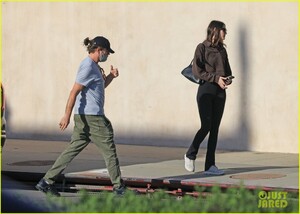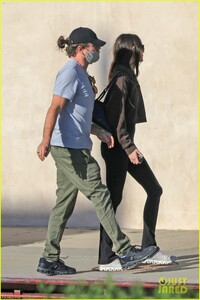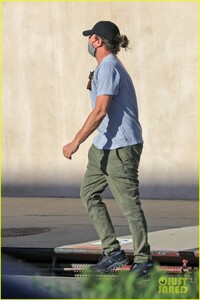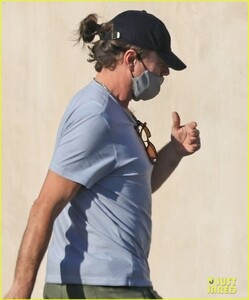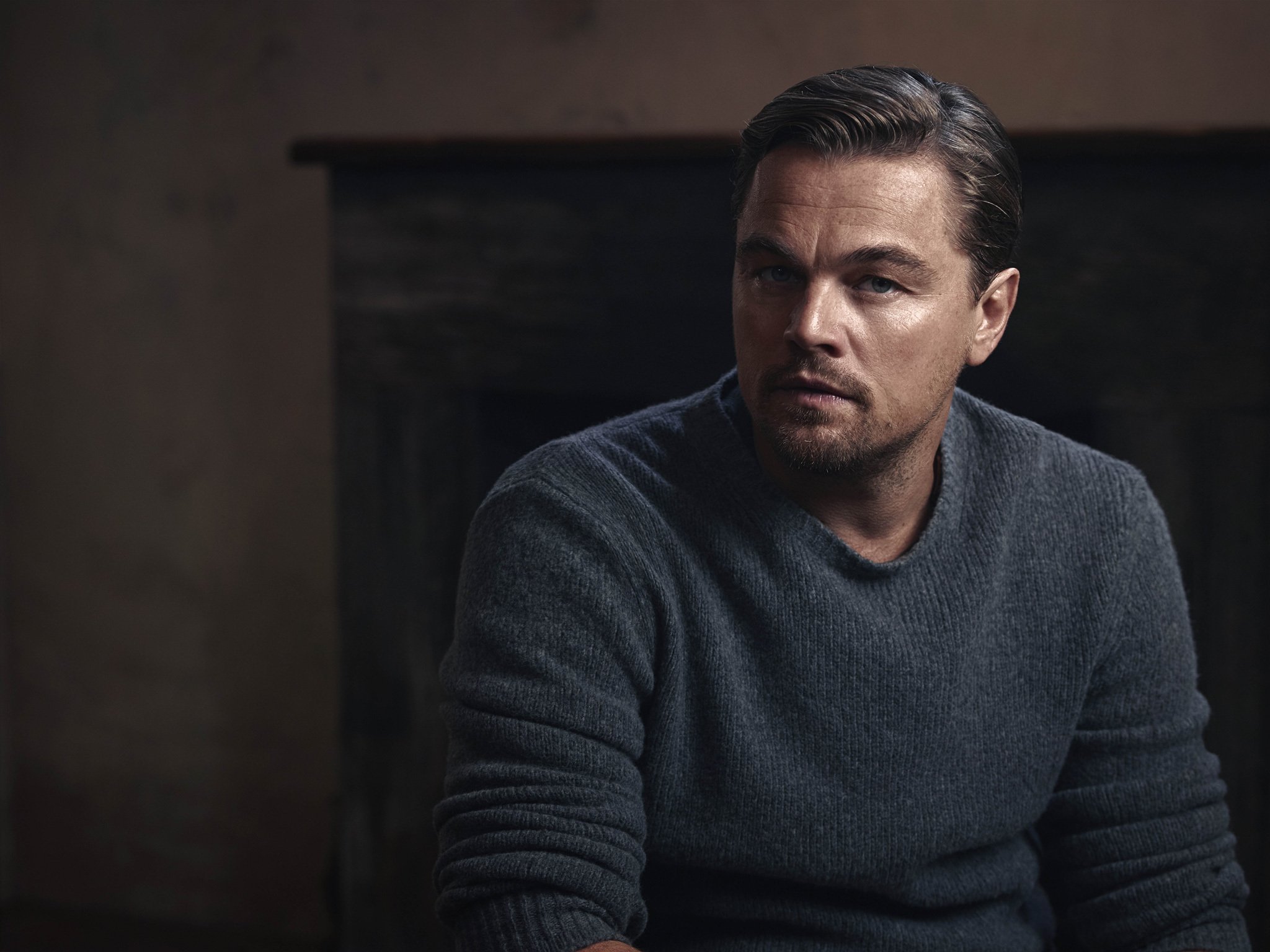
Everything posted by akatosh
-
Leonardo DiCaprio (GENERAL DISCUSSION)
What’s Tea?! Teyana Taylor And Leonardo DiCaprio Got A Lil’ Chatty At A Pre-Oscars Party Wayment! The sparks have been flying between unlikely matches lately! From Lupita and Joshua Jackson to now speculations about co-stars Teyana Taylor and Leonardo DiCaprio! The Shade Room obtained an exclusive video of Tay-Tay and Leo getting cozy while chatting at a WME Pre-Oscars Party in Beverly Hills last night. Teyana and Leonardo took to the dance floor at the Beverly Hills event and let’s just say the intimacy jumped out! What’s Popping Off Between Teyana Taylor & Leonardo DiCaprio? The video shows Teyana getting close to Leonardo, caressing his man-bun, and keeping that tense eye contact. Though no kiss was filmed, their faces were basically INCHES away from each other. And we ain’t talking in double-digits! Leonardo wasn’t backing off either. He had Teyana cheesing and kinda shocked after leaning into her ear and whispering a lil’ something. Meanwhile, sources close to Teyana’s camp tell The Shade Room that their chat was all-friendly, meaning no baewatch vibes! Just an innocent chat while surrounded by peers. So when did these two get close LIKE THAT? Well, if you didn’t know, Teyana Taylor and Leonardo DiCaprio are starring in a movie together! Last month, BACKGRID captured photos of Leo and Taylor on a movie set. In the clip, the 49-year-old appeared to tap Teyana’s peach during a scene. The Paul Thomas Anderson film appears to center on a bank heist plot and a romance between these co-stars. What About Teyana’s Hubby Iman Shumpert & Leo’s Supermodel GF As we previously reported, Teyana Taylor publicly confirmed in Nov. that she and Iman Shumpert have been split since January 2023. She had filed back then too, but used their initials. She first addressed the split in September, claiming that their friendship remained intact. But months later, reports of their court paperwork have raised questions about that. Teyana has made serious claims against her ex, including past child negligence and infidelity. Meanwhile, in November, Leonardo was spotted sharing kisses and PDA with supermodel Vittoria Cereitt at a birthday bash. They were just photographed together at the end of Feb. in Los Angeles together. https://theshaderoom.com/exclusive-video-teyana-taylor-leonardo-dicaprio-get-flirty-at-party/
-
Leonardo DiCaprio - (Please Read First Post Prior to Posting)
@Sugarwater Thanks for the pics
-
Leonardo DiCaprio - (Please Read First Post Prior to Posting)
@SugarwaterOh that'd be a bummer, but thanks for trying!
-
Leonardo DiCaprio - (Please Read First Post Prior to Posting)
A early 2025 release?🥹 I was hoping for a late 2024 release so that the film could possibly take part in the Award show season 24/25.. I'm confused acout the 80s comment. The cars and clothes definitely didn't look like 1980 to me.
-
Leonardo DiCaprio - (Please Read First Post Prior to Posting)
Lily "missing Leo tremendously" (2:44) 🥰 Yeah I miss them too. Too bad the KOTFM press tour is over for Leo🥲
-
Lily Gladstone
http://www.wtfpod.com/podcast/episode-1516-lily-gladstone
-
Lily Gladstone
I'm so happy she won. Now get your Oscar, Queen!
-
Leonardo DiCaprio - (Please Read First Post Prior to Posting)
I'm curious if Leo will be at the SAG awards. Technically he is nominated. I hope Lily wins. Emma was also great but I want Lily to win 🙏
-
Leonardo DiCaprio - (Please Read First Post Prior to Posting)
new pics: more here: https://www.justjared.com/2024/02/23/leonardo-dicaprio-sports-man-bun-during-day-out-with-girlfriend-vittoria-ceretti/
-
Leonardo DiCaprio - (Please Read First Post Prior to Posting)
The elephant probably watched Titanic and was telling him she’d never let go
-
Leonardo DiCaprio - (Please Read First Post Prior to Posting)
- Leonardo DiCaprio - (Please Read First Post Prior to Posting)
America is also one of us 🤭- Leonardo DiCaprio - (Please Read First Post Prior to Posting)
Sweet words from Lily about Leo and her being a fan of his at about 39 minutes:- Lily Gladstone
- Leonardo DiCaprio - (Please Read First Post Prior to Posting)
Yeah I think Oppenheimer will win. Most years the movie I like most, mostly also the "popular" ones (La La Land, Once Upon a time in Hollywood, ...) do not win for a movie with an important message or topic (Spotlight, Moonlight, Coda, ...) and this year KOTFM is the movie with the important topic and the "popular" one wins...😭- Leonardo DiCaprio - (Please Read First Post Prior to Posting)
I'm pretty sure Leo is the lead or one of the leads. He probably just wanted free time to see the super bowl so they chose to shoot the scenes where he isn't needed.- Leonardo DiCaprio - (Please Read First Post Prior to Posting)
Yes! But no rom com. I'd rather see a thriller or family drama with these two. And of course with a happy ending.🥰- Leonardo DiCaprio - (Please Read First Post Prior to Posting)
There's always another "new" Leo every five years. But they never come close to Leo's talent... I don't like Austin too much. He was alright in Elvis and OUATIH but I miss that special something.- Leonardo DiCaprio - (Please Read First Post Prior to Posting)
A video with a different angle. Leo does have so many different looks in this movie. It's like catch me of you can 😊 I love the "protective dad" Leo.- Lily Gladstone
^ I'm really excited for the Memory Police. I'm reading the novel right now.- Leonardo DiCaprio - (Please Read First Post Prior to Posting)
Sweet words from Lily about her friendship with Leo at 6 minutes:🥰- Leonardo DiCaprio - (Please Read First Post Prior to Posting)
Brad Pitt was cast in Quentin Tarantino's The Movie Critic. I assume that was the role Leo was rumored to play. Too bad I would have loved for Leo and Tarantino to work together again.🥹 And this is supposed to be Tarantino's last film... https://www.imdb.com/news/ni64424714/?ref_=tt_nwr_1 Thanks everybody for the new pics and videos. Leo's man bun is back😄- Leonardo DiCaprio - (Please Read First Post Prior to Posting)
He does look young and very handsome although he is dressed like a homeless person😊- Leonardo DiCaprio - (Please Read First Post Prior to Posting)
- Leonardo DiCaprio - (Please Read First Post Prior to Posting)
Yes, that would be cool too 😎 - Leonardo DiCaprio - (Please Read First Post Prior to Posting)
Account
Navigation
Search
Configure browser push notifications
Chrome (Android)
- Tap the lock icon next to the address bar.
- Tap Permissions → Notifications.
- Adjust your preference.
Chrome (Desktop)
- Click the padlock icon in the address bar.
- Select Site settings.
- Find Notifications and adjust your preference.
Safari (iOS 16.4+)
- Ensure the site is installed via Add to Home Screen.
- Open Settings App → Notifications.
- Find your app name and adjust your preference.
Safari (macOS)
- Go to Safari → Preferences.
- Click the Websites tab.
- Select Notifications in the sidebar.
- Find this website and adjust your preference.
Edge (Android)
- Tap the lock icon next to the address bar.
- Tap Permissions.
- Find Notifications and adjust your preference.
Edge (Desktop)
- Click the padlock icon in the address bar.
- Click Permissions for this site.
- Find Notifications and adjust your preference.
Firefox (Android)
- Go to Settings → Site permissions.
- Tap Notifications.
- Find this site in the list and adjust your preference.
Firefox (Desktop)
- Open Firefox Settings.
- Search for Notifications.
- Find this site in the list and adjust your preference.
